I've been teaching El Jefe's niece "M" to crochet.
El Jefe has been hearing all about what a hard time she is having with a crochet project for school. M's mother doesn't crochet so she can't help. El Jefe's mother took M one weekend and apparently spent most of the weekend just trying to untangle a huge mass of knotted crochet thread. I've heard stories of her work mysteriously unraveling before her eyes with a lot of related crying and hand-wringing going on.
I kept telling him that I could help her. I've been crocheting ever since my grandmother taught me when I was 9 years old. In general, I would make a terrible teacher as I don't have much patience, but I have successfully taught several people, including a couple of children, to crochet without anyone crying or hating me or anything. In fact, I taught one his other nieces to crochet in the U.S.
Apparently her parents finally got desperate enough to bring her to the dreaded La Gringa. It must have been a hopeless situation because they have never even asked me to help with the children's English!
Thank goodness they did! I diagnosed the problem(s) instantly. In the first place, her crochet hook was no good at all. The tip was bent over into an 'L.' There is no way in the world anyone could have crocheted with that hook. The store just sold her a defective hook and no one noticed, including her teacher, that it was the main reason she was having a problem.
Second, she had a double ply synthetic thread of some sort that was so slippery that I couldn't even crochet decently with it. I would never use such a thread − definitely not an appropriate thread for a beginner.
Third, her project was a blouse! A blouse is an awfully big project for a beginner, not to mention that she had NO instructions whatsoever from her teacher except to make a chain that fit tightly above her bosom, connect it and start crocheting until she reached her waist. What the.....? Is that any way to teach something? There are zillions of crochet patterns, including plenty of free ones on the internet.
By the time I heard this, I was starting to get a little angry. This poor girl was doomed to failure from the beginning. The blouse was a terrible idea on every level.
First of all, it would take weeks, if not months, for a beginner to complete using a tiny single crochet stitch with a fine thread. Second, as I tried to tactfully point out, if you crochet a non-stretchy tube to fit tightly above the bosom, it will not fit the other areas of the body. And how on earth could you get it on and take it off? Third, a "blouse" like this could not be worn with a bra. She's a chubby 14-year-old who would have looked like an underage hooker wearing it. If she ever was able to finish it and was able to somehow put it on, I'm sure her father would have instantly forbid her to wear it which would have made her ashamed of her work.
 So, I gave her a new hook, found some different thread, and taught her the basic stitches, while I tried to find out if there was any possible way that she could do a different project than the blouse. She seemed to think that it would be all right with her teacher, so we found a pattern in one of my books. It's still a very ambitious project for a beginner, but hopefully it will be something she can do.
So, I gave her a new hook, found some different thread, and taught her the basic stitches, while I tried to find out if there was any possible way that she could do a different project than the blouse. She seemed to think that it would be all right with her teacher, so we found a pattern in one of my books. It's still a very ambitious project for a beginner, but hopefully it will be something she can do. We got off to a slow start as I was checking her work and kept having to rip parts out and start a round over. That's not me being mean, that's just a fact of crocheting − I do it myself all the time when I make a mistake. There are very few errors that you can fix, you just have to rip it out and start again if you want it to look nice. Well, I did cheat a little. I usually re-crocheted the part I ripped out myself so it wouldn't take so long and she wouldn't get discouraged.
Saturday evening we couldn't continue because the power went out. I asked her when her project was due, thinking she would say next month or something. Nope. It's due Monday! Oh, great! We're on round 8 of 25 rows and each round is bigger and more time consuming than the last. Now if she fails crocheting, the family will think that it's all my fault.
 Aside: This is one of my projects. The pattern is from a little Spanish-language crochet magazine called Puntorama Ganchillo. The magazine is available in the grocery stores and gas stations. They have some excellent, unusual projects which use diagrams and very little written instructions.
Aside: This is one of my projects. The pattern is from a little Spanish-language crochet magazine called Puntorama Ganchillo. The magazine is available in the grocery stores and gas stations. They have some excellent, unusual projects which use diagrams and very little written instructions.El Jefe just took M home tonight (Sunday) and hung around awhile. He said she seemed much more confident and happy about her project. Her parents are so relieved, too.
Well, so far, so good. Tomorrow we'll find out what the teacher had to say.








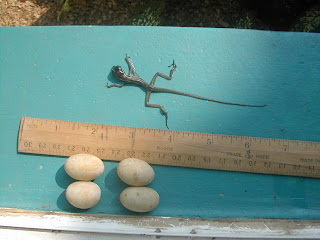








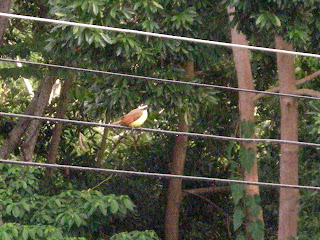



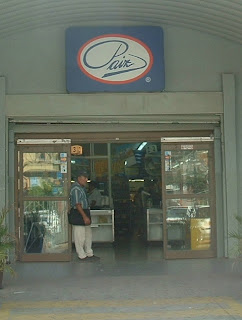





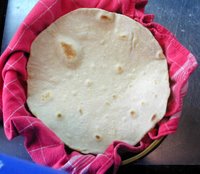








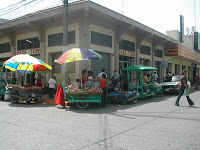




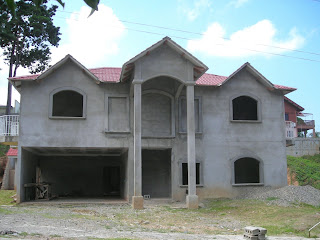








 Welcome to my Blogicito —
Welcome to my Blogicito — 






